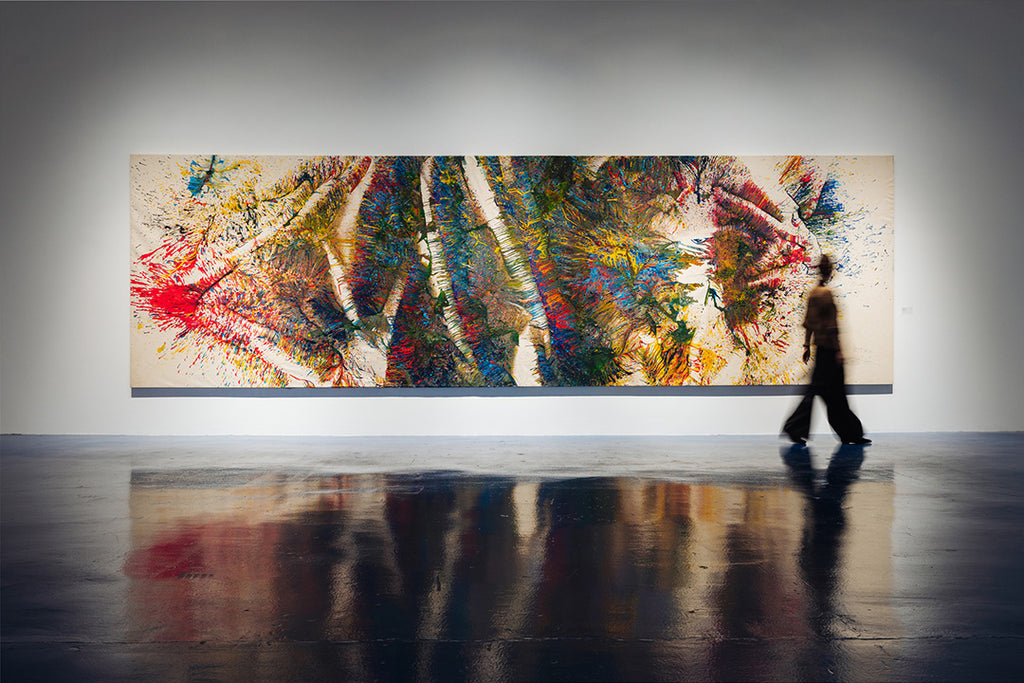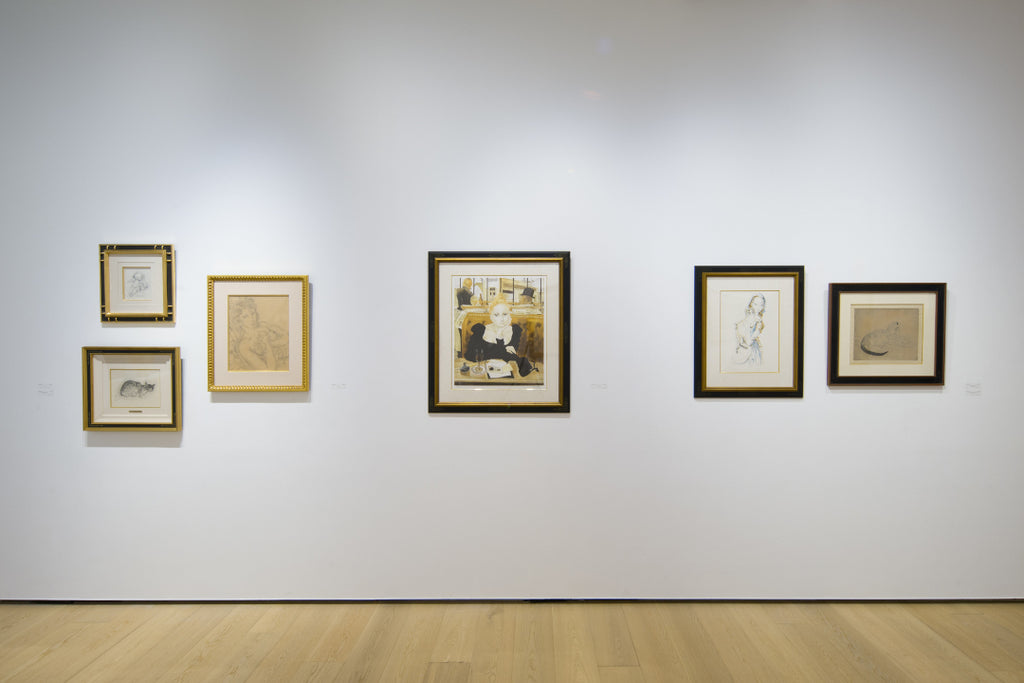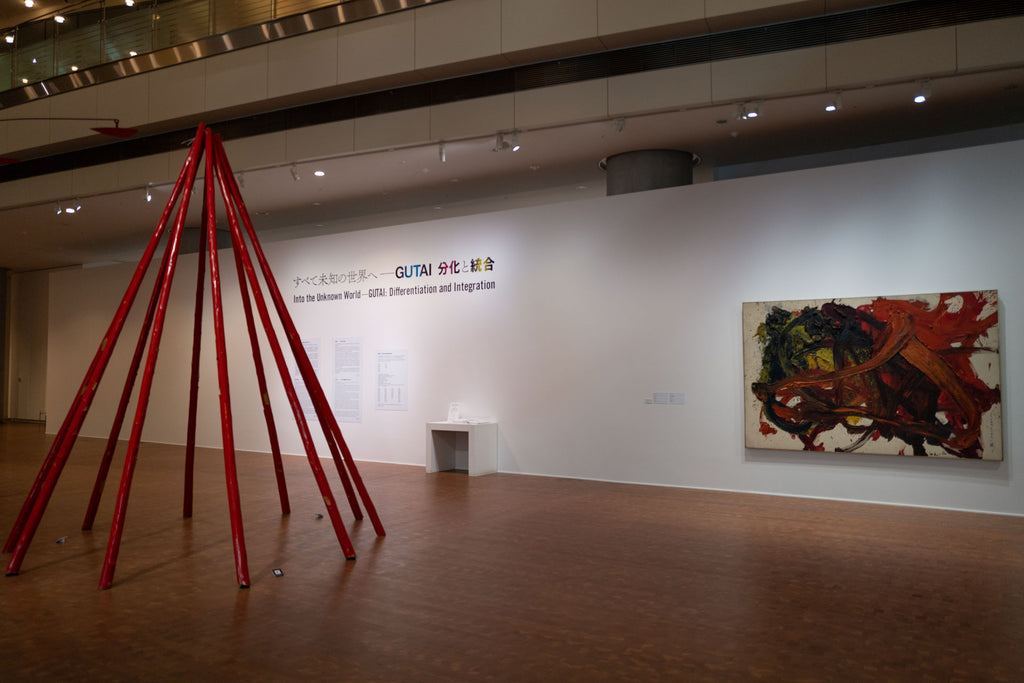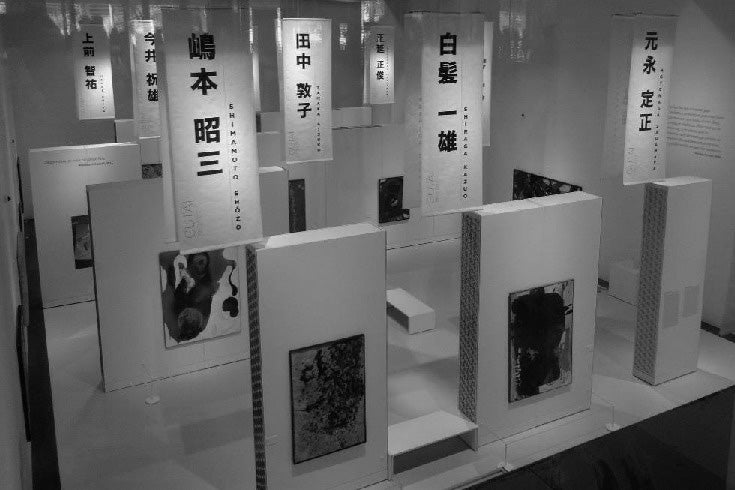ARTICLES
Yasuo Sumi's Power of Expression and Execution: Making Art through Flashes of Inspiration
GUTAI STILL ALIVE 2015 vol.1
08/35

Yasuo Sumi
A project evolving the digitized archive of the book, “GUTAI STILL ALIVE 2015 vol.1”. The 8th edition features Yasuo Sumi, a member of the Gutai Art Association and AU (Art Unidentified). We explore his dual life as a teacher and artist through the words of curator and art critic, Yoshio Katoh.
Yasuo Sumi Materializes Instantaneous Inspirations Genially
Yoshio Kato
Curator, art critic
His motto: “Yakekuso (desperation), fumajime (frivolity) and charamporan (irresponsibility).” Born in 1925 in Osaka, former Gutai artist and now a member of “International Contemporary Art AU,” Yasuo Sumi has been active for more than half a century, while teaching at junior high- and high schools and colleges in his younger days.
Formerly an economics major at Kansai University and Ritsumeikan University, Sumi encountered art when he knew Shozo Shimamoto. A colleague of Sumi at Osaka Municipal Toyosaki Junior High School, Shimamoto advised Sumi to enter for the seventh Ashiya city art competition in 1954, where Sumi would meet Jiro Yoshihara, a jury member.
The Ashiya competition, which started in June 1948, was the cradle of Gutai, I heard. Sumi became a Gutai member in 1955, and participated in the first Gutai exhibition at Ohara Kaikan in Tokyo and all the Gutai exhibitions thereafter.
“Desperation means a state in which my spirit is completely free. I become infinite as does my talent. Frivolity is rejection of the past. It’s to reject or neglect all the rules of human society. And it means nothing less than future. Irresponsibility is a return to humanity, I think. … Desperation, frivolity and irresponsibility are truly human, and I’m seeking such values,” Sumi said.
Indeed, these values may free people from the stress of modern society. It helps us recover our original human power. It’s like a renaissance. For more than half a century Sumi has been devoted to avant-garde art, supported by such philosophy in addition to his own gift and experience.
Under the doctrine of Yoshihara, “Never imitate others” and “Make what no one has ever seen,” young artists based between Osaka and Kobe formed the Gutai group in the city of Ashiya, Hyogo Prefecture around August 1954.
The Gutai leader Yoshihara was almost one generation older than the younger members, whose works Yoshihara judged subjectively and sensuously. He used to just say, “It’s good” or “It’s bad,” and did no further explanation, I heard. Yoshihara attached absolute importance to the work’s concept and the originality of the way it’s made, and judged the works dichotomously by “good” or “bad.” Yoshihara taught himself oil painting as a junior high school student. Many other Gutai members also didn’t go to art college and taught themselves. Rather than academic education, groping self-teaching might have been apt for the artists to conceive their fanciful ideas. They developed their original methods by teaching themselves.
In a sense, Sumi’s work is based on automatism. His work seems to be made by chance, but actually the artist judged its quality when the work was completed, as did Yoshihara. And Sumi could produce his works in large numbers. Many other Gutai artists had inevitably adopted the same style of making works.
Yoshihara told Gutai artists to make what no one had ever seen. The artists then decided to make their works in methods that no one had ever known, I guess. They eventually came up with a method to paint without paintbrushes.
Kazuo Shiraga held on to a rope hanging from the ceiling and painted with his feet. Shimamoto flung glass bottles containing paint onto the floor. Sadamasa Motonaga flowed paint instead of using brushes.
Sumi used an abacus. While he was teaching school, he used to make some 100 drawings on waste paper every day. One day he tipped over an inkpot on the paper by mistake. He first got embarrassed but soon inspired. He stirred the ink with an abacus at hand. Then there came a form that he had never seen. He made 100 such works immediately and easily.
Sumi recollects: “The unconscious way of stirring ink with an abacus led to an expression of natural power or joy.
“I took the works to school to show them to Shimamoto. He said, ‘It’s wonderful. How did you do it?’ I responded, ‘I held my breath as I painted it.’ Shimamoto said, ‘Are you all right?’ I said, ‘Actually I made it using an abacus.’ And I flowed ink on a sheet of paper in front of Shimamoto and stirred the ink with an abacus, drawing interesting lines at a time. Shimamoto looked impressed and praised me. I rejoiced.”
Thus Sumi’s painting was born. Great artists often achieved success or invention out of failure or discovery. They are able to materialize instantaneous inspirations in genial ways.
Besides the abacus, Sumi tore an oilpaper umbrella, soaked it in paint, held it in the hands and hit the canvas with it. He pasted a sheet of paper on a mosquito net and painted on it using a vibrator. In the works made in these ways, the overlapping and sinuous lines look radiant and expanding outside of the support. The viewer would feel the traces of the artist’s action, that is, time and motion, and light of joy. For more than half a century Sumi’s “desperate, frivolous and irresponsible” art has been full of the joy of painting.
(Mothly Gallery, July 2013)
Read more about the “Gutai Art Association »
*Information in this article is at the time of publication.



